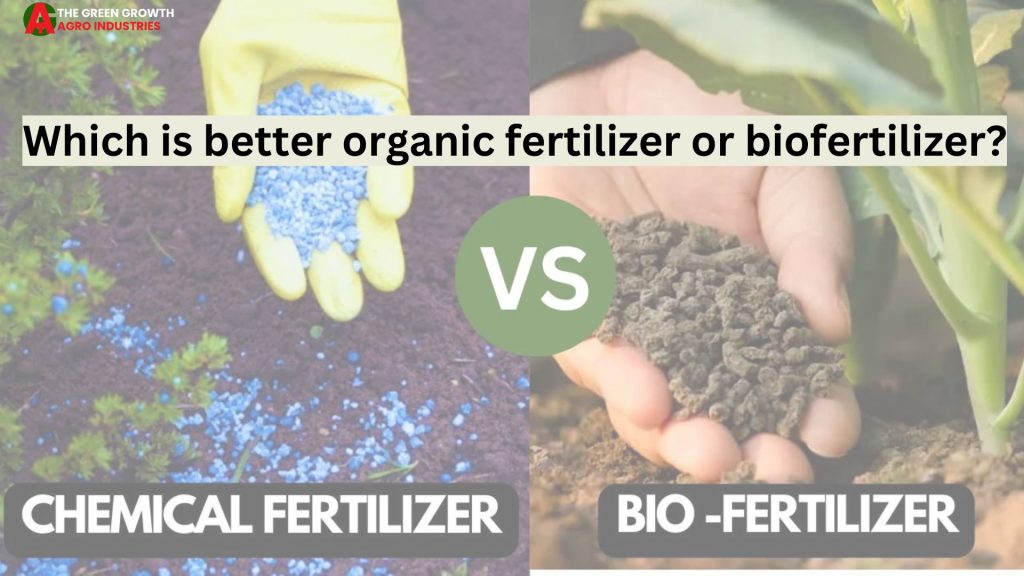Blog
Which is better organic fertilizer or biofertilizer?
Differentiating between which is better organic fertilizer or biofertilizer has become important in both farming and gardening sectors. Each option boasts its own distinct advantages and factors to carefully weigh. We’ll go into extensive detail on both organic and biofertilizers in this blog to provide you with the knowledge you need to make a choice that is in keeping with the needs of your plant and your environmental values.
.
Organic Fertilizers:
- Composition: Organic fertilisers are made from natural components including manure, waste from animals, and residues from plants. A range of vital nutrients, including nitrogen, phosphorus, and potassium, are provided by these compounds and are necessary for boosting plant growth.
- Gradual Release: Organic fertilizers release nutrients slowly, providing a consistent supply to plants. Thus, the possibility of overfertilization and nutrient runoff is reduced. revise to be written in human
- Soil Enhancement: The microbial activity and soil structure benefit greatly from using organic fertilisers. These organic fertilizers promote the cultivation of a robust soil ecosystem and contribute to sustaining soil fertility over the long term, factors that greatly enhance plant growth.
- Eco-Friendly: Organic fertilisers are often considered an environmentally friendly option because they reduce the chance that chemicals could pollute the soil and water, helping to maintain a healthier ecosystem.
Biofertilizers:
- Microbial Allies: Biofertilizers contain helpful microorganisms including bacteria, fungi, and algae. These microbes collaborate with plants in symbiotic ways to help them absorb nutrients.
- Nitrogen Magic: Rhizobium and azotobacter, two biofertilizers, are well known for their capacity to fix nitrogen. They lessen the need for artificial nitrogen fertilisers by converting atmospheric nitrogen into a form that plants can use.
- Sustainability Focus: Biofertilizers are champions of sustainable farming. They help by lowering greenhouse gas emissions, improving the condition of the soil, and decreasing the need for chemical fertilisers.
- Tailored Solutions: For a plant’s particular needs, biofertilizers can be made. For instance, mycorrhizal fungi are a great option for phosphorus-deficient soils since they are excellent at helping plants absorb nitrogen.
Choosing Between the Two:
- Plant Considerations: Assess your plants’ unique needs. Some crops may thrive with organic fertilizers, while others may benefit more from the microbial support provided by biofertilizers.
- Soil Evaluation: Examine your soil’s health. Biofertilizers may be a game-changer for a plant that lacks microbial activity or has nutritional deficits.
- Environmental Values: When compared to synthetic alternatives, organic and biofertilizers are more environmentally friendly choices if sustainability is a major priority. The carbon impact of biofertilizers might be a little lower.
- Budget and Availability: Organic fertilizers are often more readily available, while biofertilizers might require specialized sourcing. Consider your budget and accessibility.
Conclusion:
Ultimately, the decision between organic and biofertilizers hinges on your specific gardening or farming objectives. Organic fertilizers provide a comprehensive nutrient profile and soil improvement, while biofertilizers leverage the power of beneficial microorganisms. To maximise plant health and contribute to a sustainable future in agriculture, many environmentally conscious producers choose to combine the two methods. You may adjust your fertilisation strategy to meet the needs of your plants while promoting a more environmentally friendly and long-lasting method of farming and gardening by being aware of the particular advantages of each alternative.

